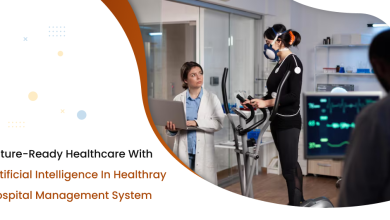Across the UK, lung cancer currently has the highest mortality rate of all cancers, with over 35,000 people year on year passing away from the disease. Earlier diagnosis of the disease has become a focus for the NHS; their Long-Term Plan sets a new ambition that, by 2028, three in four cancers will be diagnosed at stage 1 or 2.
In order to meet this target, digital innovation across the National Health Service is required and one of the first steps in achieving this was the launching of the National Artificial Intelligence (AI) Strategy. This marks the start of a step-change for AI in the UK, as it recognises the power of AI to increase resilience, productivity, growth, and innovation across multiple sectors including healthcare.
That milestone was the result of many years of developing, testing, and trialling AI technology. The goals: to make a positive impact on patient care from diagnosis through to treatment and to help improve innovation and productivity within the healthcare setting.
Ground-breaking AI software has been developed to help meet these targets by detecting and helping diagnose lung cancer earlier on in the patient care journey. This technology could not only help to increase survival rates, but it could also reduce unnecessary invasive procedures on healthy patients, helping to free-up NHS time and resources for patients who need it most.
To realise early diagnosis targets, AI needs to be widely adopted across multiple NHS clinical settings. And even though it has been a promising time following years of progress in AI research and development, the next challenge is to take the time and preparation needed to ensure healthcare systems and operations are set up to truly maximise the impact of AI technology.
Step 1: Harness data and recognise the true value of it
AI can give clinicians access to new data to make better-informed patient care decisions and improve patient outcomes. But learning how to extract the value from the analytics and insights presented to them by AI software is the first step of integration into the healthcare setting. When it comes to lung cancer, Optellum’s AI software gives clinicians a Lung Cancer Prediction score based on imaging AI that has been trained to distinguish benign lung nodules from malignant ones.
Widespread training is required to enable clinicians to interpret the score and integrate the software within existing care procedures. Doing so will empower optimal decision-making so diagnosis and treatment can be provided before the disease has developed.
Step 2: Take an integrated approach to care
There needs to be a faster pathway from referral to diagnosis between GPs in local health and care systems and clinicians within hospital settings in order to intercept lung cancer at an earlier stage. This requires a new approach to diagnosis, which begins as early on as the first appointment with a GP.
Akey opportunity for catching lung cancer sooner is in the hundreds of thousands of Computed Tomography (CT) scans NHS patients already have each year for other conditions, such as heart scans.
CT scan data needs to be shared and communicated across healthcare settings and integrated with AI decision support software to maximise the opportunities to diagnose lung cancer sooner.
This cohesive approach requires the healthcare workforce to change how it currently works across settings so that a timely lung cancer diagnostic pathway can be created to intercept cancer earlier where treatment is likely to be more successful. It requires the healthcare workplace to update existing job roles and descriptions, create new daily tasks and communication channels, as well as provide further support and training.
Step 3: Network and collaborate
The integration of care settings will also require greater communication between primary and secondary care professionals. The sharing of CT scans and patient tracking data will help facilitate information sharing to progress patient care as needed for early detection and diagnosis.
Co-location of professionals across care settings may be a beneficial structural change to help foster collaboration and progress patient care.
Future-gazing
With a combination of clinically trialed AI technology that has proven results, and the right practical support in place across healthcare settings, early detection, and diagnosis of illnesses such as lung cancer will have a life-changing impact over the long term.



